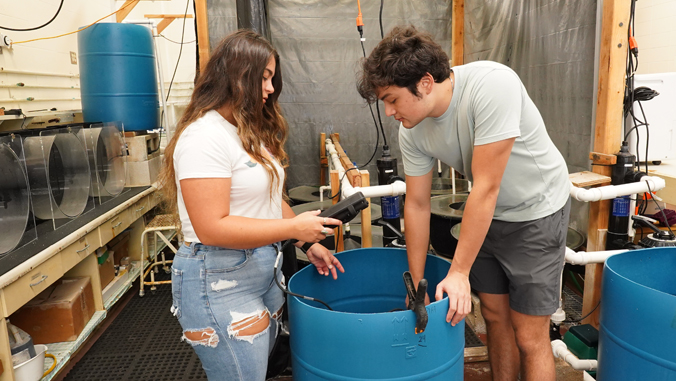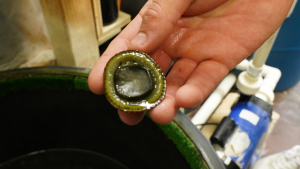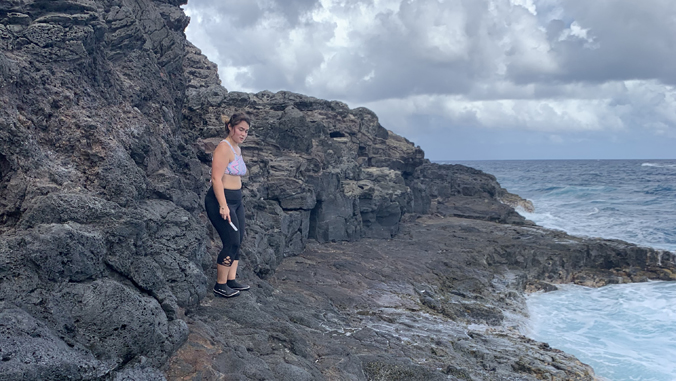
Oʻahu has the lowest population of ʻopihi, endemic intertidal limpets, across the Hawaiian Islands. To help rebuild the population of this Hawaiian delicacy, two graduate students at the University of Hawaiʻi at Mānoa College of Tropical Agriculture and Human Resources (CTAHR) are attempting to spawn and rear ʻopihi to adulthood in their lab on campus.
Angelica Valdez and Mitch Marabella are trying to complete the ʻopihi life cycle. To do that, they would need to spawn and fertilize an ʻopihi in the lab, grow that ʻopihi so that it can reproduce, and transplant the offspring back into the wild.

“The dream goal is to get all the way through the life cycle,” said Valdez. “We’ve come pretty close. The 30-day ʻopihi animal was the first where we’ve had records of shell growth. That is the longest we’ve had, it was really incredible that we got it that far.”
Spawn trials
To re-establish the population, Valdez and Marabella are conducting spawn trials in the lab, a process that can take up to 36 hours overnight. They start by introducing a peptide hormone to the ʻopihi and place them into a spawning container. During that time they will record measurements and continue to check on the ʻopihi every hour.
Peak spawning times are between midnight and 3 a.m. Once the ʻopihi spawn, the students begin checking on the animals and the quality of the water and containers. One person counts the eggs while the other is fertilizing. After spawning, there is an 8–12 hour lull until researchers do a larval transfer before the grow out phase.
“When we do get a spawn, we have to really rush because ʻopihi don’t have a protective shell around the egg so it is susceptible to polyspermy (when multiple sperm enter an egg),” said Marabella. “So we have to make sure it is properly fertilized, making our work much more active at night.”
So far, Valdez and Marabella have conducted 20 spawn trials. They have also partnered with the Waikīkī Aquarium, which provides their lab with barrels of salt water for the ʻopihi. During a spawning trial, students go through up to 50 gallons of water.
Sustainable harvesting
Students are trying to get ʻopihi to a viable stage where the reproduced ʻopihi can be outplanted into the intertidal area of the seashore to build up the population again, so that people can harvest responsibly and sustainably.
“It’s a long process and that’s why it is harder to look toward farming at this point,” said Marabella. “We’re more focused on conservation right now because farming would not be possible if this population is decimated.”
Former CTAHR students began trying to re-establish the ʻopihi population on Oʻahu in 2007. Since then, the project has been handed down to the next cohort of students. Valdez began working on the project in 2018 and Marabella joined the project in 2020.
“We never want to stop people from harvesting. It is a tradition with family and it is cultural to Hawaiʻi,” said Valdez. “Our goal is to build back up the ʻopihi population so that it is sustainable for everyone to harvest.”


